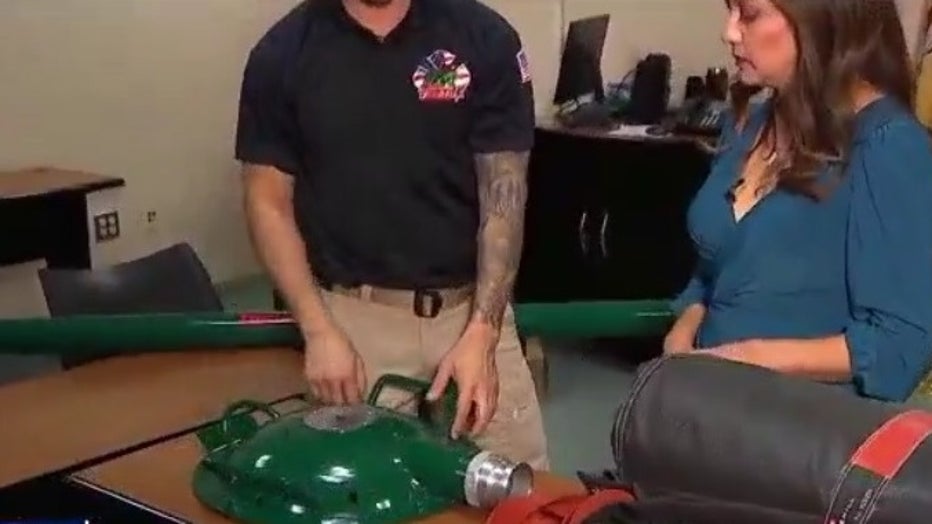Jersey City Fire Department looks for new ways to fight electric vehicle fires

Electric vehicle fires
EV fires rarely happen but when they do they can burn for hours. Fox 5 NY's Ines Rosales has more.
With new technology comes new and more challenges.
As more electric vehicles hit the road, the chances of EV fires increases.
Firefighters are trying to stay ahead of the game by finding new and safe ways to fight those fires. The main concern is parking garages in residential buildings. Firefighters have to work quickly to get to the fire and stop it from spreading to other cars that are parked next to it.
New Jersey firefighter Howard "Buddy" Hayes came up with a system called Turtle Fire System to help get the water to the battery pack.
Electric vehicle fires rarely happen, but when they do happen the fire can burn for hours.
Fire departments are trying to find new, safe ways to fight EV fires.

Tesla EV car plugged in and charging in driveway of home, Queens, New York. (Photo by: Lindsey Nicholson/UCG/Universal Images Group via Getty Images)
Getting to the battery is the hardest part.
Jersey City fire chief Stephan Drenan explains: "The fire is underneath the car. The battery takes up the whole floor of the car, the whole bottom."
"To get water on that battery is very difficult. So there's recommendations of tilting the car, but that could also be a problem. So what we're looking for is to be able to get a lot of water on that battery quickly, to stop it basically in its tracks and stop that thermal runaway going from one battery to the next," Chief Drenan said.
EV fires
Typically, firefighters would use 500 gallons of water to put out a gas-powered car fire.
For an EV--8,000 gallons is the recommendation. There are other dangers firefighters need to look out for, like shock and electrocution.
"…Our main concern would be the parking garages that are in the residential buildings. So we'll have eight stories of parking, typically with 50 or 60 stories above residential units above that. so of course, we have a life hazard at that point."
The main concern with the batteries is thermal runaway.
"Thermal runaway is when the battery itself malfunctions either from an accident, a fire, or just an electrical problem, or it's a malfunction, Chief Drenan explained.
"Every car is different, obviously, but just one cell going bad will actually spread to the others very rapidly," Drenan added.
Turtle Fire System

Buddy Hayes came up with the turtle fire system to help firefighters deliver the water needed and prevent thermal runaway.
"So the turtle was a device we already have in the fire service, and we kind of took the math from that device and kind of laid it out over this dome," Hayes explained.
"So in the event the car does come down on this turtle, we still have water flowing around it," Hayes added.
"When I first designed this system, one of my first priorities was protecting the hose line under the car. So if we have our hose line connected to this device, picture, this centered on their vehicle, our hose line is going to be right where the jet flames are coming from the underside of the vehicle. So our hose line would be the first thing to go because we have no thermal barrier for that for for those flames, the design of the turtle has covered the area of the entire battery pack.
"You can't just focus water on one area," Hayes said.
Electric Vehicles
Experts say if you've been in any kind of accident, don’t park in a garage.
If your EV catches fire let first responders know that it’s an EV, so they can prepare.
Firefighters are trying their best to stay ahead as more people drive electric vehicles.

